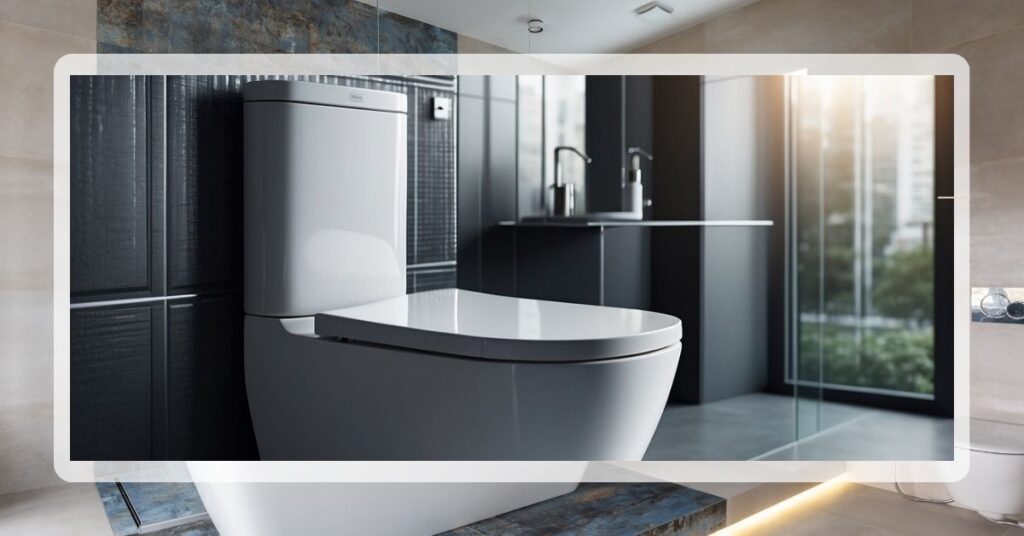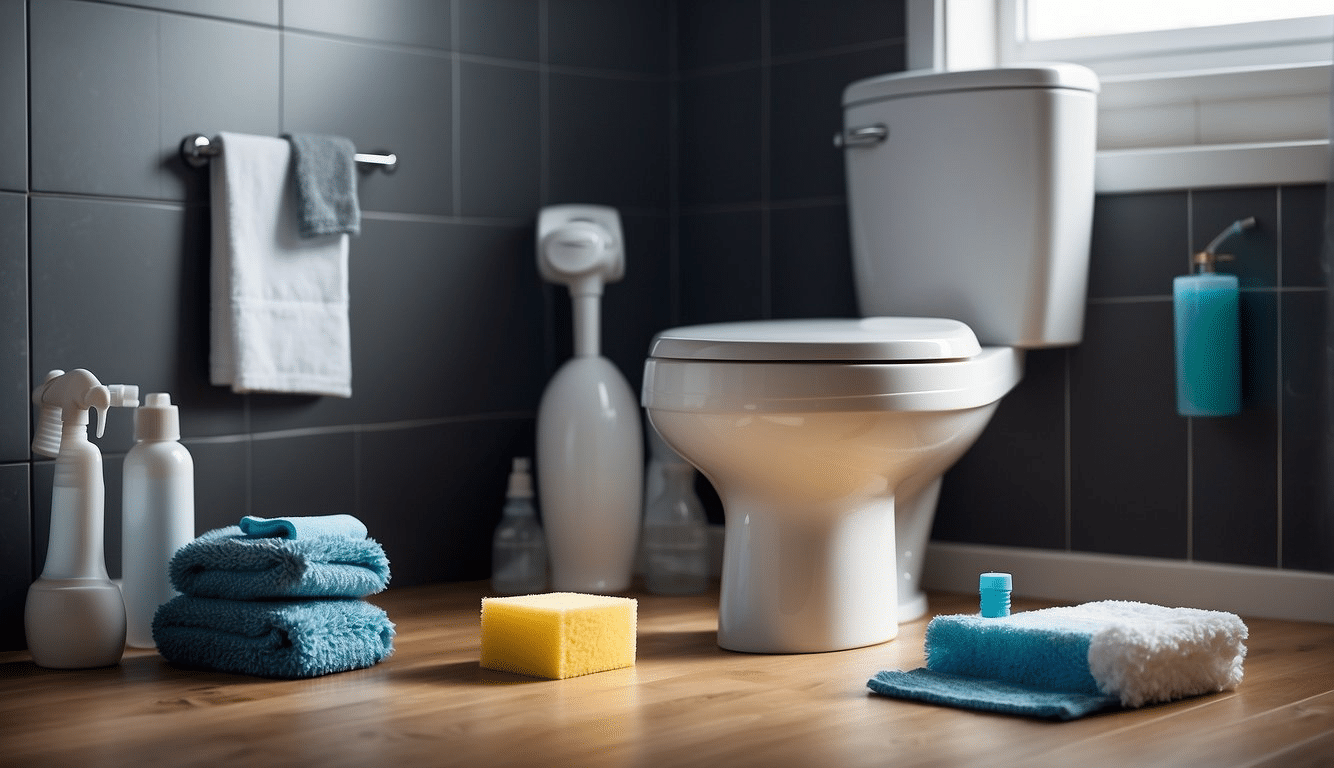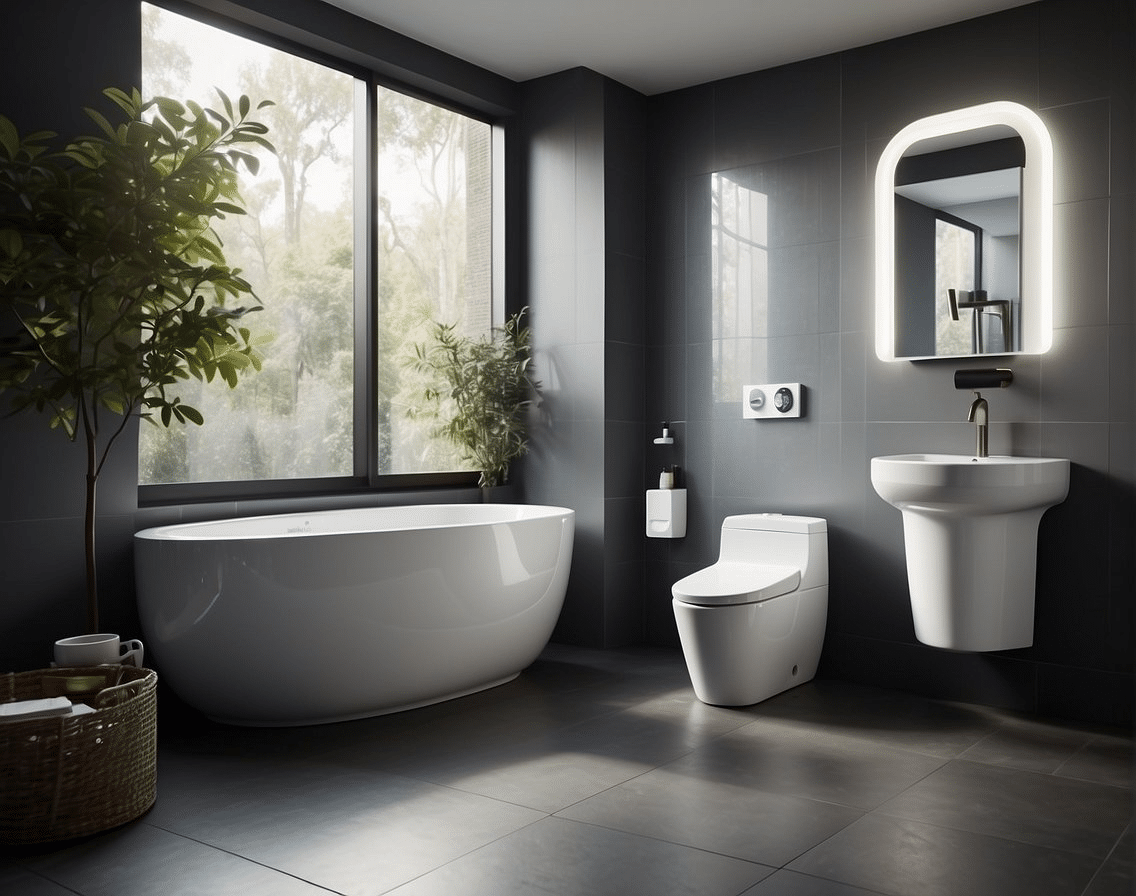
The hygiene benefits provided by smart toilets present the pinnacle of the bathroom experience.
Equipped with built-in bidets, automatic lids, and self-cleaning features, these advanced fixtures offer an impressive level of comfort and convenience that a traditional toilet can’t match. As a result, a clean smart toilet involves a bit more effort than your standard one.
Consisting of quality materials and smart technology makes for a more fine approach to cleaning.
So, if you recently installed one and are interested in the cleaning process, or perhaps you want to validate what you are doing currently, you are certainly in the right place for guidance.
What Cleaning Supplies Do I Need?
Using the right supplies is important when keeping your smart toilet pristine. They ensure cleanliness and hygiene and help maintain the luxury of your bathroom fixture without causing damage in the long run.

Microfiber Cloths
I would never start the cleaning process without microfiber cloths. They’re soft, which means they won’t scratch the delicate surfaces of my smart toilet, and they’re highly effective at trapping dirt and moisture, ensuring a hygienic clean.
Soft Toilet Brush
For the bowl, a soft toilet brush is my go-to tool. It’s gentle enough not to scratch the porcelain but sturdy enough to scrub away grime. Regular cleaning with a soft brush keeps the bowl looking new and is more eco-friendly than other disposable options.
Rubber Gloves
I make sure to wear rubber gloves during the cleaning process. They protect my hands from cleaning solutions and maintain high hygiene standards by preventing contact with bathroom germs.
Disinfection Wipes
Disinfection wipes are convenient for quick touch-ups on the exterior of my smart toilet, especially on handles and buttons. I like to use wipes free from harsh chemicals to maintain an eco-friendly environment while ensuring high personal hygiene standards.
A Toothbrush or a Small Brush
Light Toilet Bowl Cleaner
Finally, a light toilet bowl cleaner is formulated to be safe for use with luxury smart toilets. It should be effectively clean without harsh chemicals, maintaining my toilet’s hygienic shine and operation without risking damage to its components.
6 Steps To Clean Smart Toilet

1. Turn Off The Power
Before beginning, always ensure your safety by turning off the power switch on the smart toilet.
Unplug the power cord or switch off the power at the circuit breaker to prevent accidental activation of its smart features, such as automatic flushing or the built-in bidet.
2. Protect Sensors and Electric Controls
When you clean the toilet, take good care of the electrical parts, like the buttons and sensors. Water can ruin these parts, which might make the toilet stop working properly. Before you start cleaning, cover these parts with something waterproof, like plastic. This helps keep them safe from water and keeps your toilet working well.
3. Clean Smart Bidet Toilet Seat
Use a soft cloth and a gentle, non-abrasive cleaner to clean the bidet seat.
Avoid harsh chemicals as the cleaning solution; use mild soap and a damp cloth to clean all bidet seat areas and maintain the proper functioning of the materials and components.
Bidet Nozzle
Push the “nozzle cleaning” button to start water flowing around the nozzle to clean it. Then, gently pull the nozzle out with your hand and hold it firmly. Wipe the nozzle and the end of the tube with a soft cloth and water. When you’re done, press the “stop” button to stop the water from spraying.
Inlet Filter
If the water filter in your toilet is clogged with dirt, the flush might not be strong enough. You should clean this filter often to keep the water flowing well. To clean it, turn off the water to stop the flow, unscrew the filter, and brush it to remove the dirt.
Deodorizing Box and Suction Port
If the deodorizer box or the part that sucks in smells is dusty or has other stuff on it, it won’t take in as much air. You can clean off the dust with a toothbrush or a small brush.
4. Cleaning the Seat and Toilet Lid
Spray or apply the mild cleaning solution onto a soft cloth rather than directly onto the toilet seat or lid. This helps control the amount of cleaner and prevent potential damage from harsh spray contact. Using the cloth dampened with the solution, gently wipe the seat and lid. Be thorough, covering all the surfaces that are touched frequently.
If the disinfectant instructions recommend doing so, use a clean, damp cloth to rinse off any remaining cleaner from the seat and lid to prevent any residue.
5. Cleaning the Bowl
Most smart toilets often feature self-cleaning functions, but regular manual cleaning is necessary for optimal hygiene.
Splash the antibacterial cleaner around the toilet bowl’s rim, ensuring a good amount under the rim where water flows from, as this area can harbor bacteria and limescale. The cleaner should coat the sides of the bowl as it drips down.
Allow the cleaner to sit for 5 to 10 minutes. Use a toilet brush to scrub the bowl thoroughly. Start from under the rim and work your way down to the bottom of the bowl.
6. Finish With a Polish and Power On
Finally, you can polish the exterior using an eco-friendly glass cleaner or a damp microfiber cloth to preserve that high-gloss finish. Once everything is sparkling clean, you can restore power to the smart toilet.
How Often Should I Clean My Smart Toilet?
Regular cleaning prevents the buildup of bacteria and limescale, which can potentially harm my smart toilet’s sensors and self-cleaning capabilities.
Here is a good schedule one may stick to:
- Weekly: Give the smart toilet a more thorough cleaning. This includes using a cleaning solution on the bowl and a disinfectant on the touchpoints, such as buttons and handles.
- Monthly: I delve deeper, cleaning the harder-to-reach areas and inspecting the sensors and smart bidet elements to ensure they are free from dirt and residues.
Frequently Asked Questions
Which cleaning agents are safe for smart toilet surfaces?
For the exterior, I use mild cleaners or a damp microfiber cloth. If I encounter tough stains, I use a disinfectant wipe, but I always avoid abrasive cleaners or bleach that could damage the toilet’s finish or the electronics.
How do I clean the nozzle so my smart toilet remains effective?
Regularly using a soft, damp cloth keeps the nozzle clean without causing harm. For a more thorough clean, I follow the manufacturer’s instructions, which often suggest gentle brushing or removing the nozzle for cleaning.
Can you clean a smart toilet like a regular toilet?
Yes, but with some caution.
I might use a non-abrasive toilet cleaner for the bowl. I’m extra cautious about electronic areas like buttons and sensors, so I use a damp cloth.
What’s the best way to disinfect a smart toilet without damaging it?
To disinfect my smart toilet, I use disinfectants approved by the maker, usually wipes or safe sprays for electronic devices. This way, the smart features are kept safe while the toilet remains hygienic.
How often should smart toilets undergo deep cleaning?
I clean my smart toilet deeply every couple of months or as suggested by the manufacturer. According to the manual, this process usually involves thoroughly cleaning all nozzles, sensors, and filters.
Daniel Barczak
Daniel Barczak is a software developer with a solid 9-year track record in the industry. Outside the office, Daniel is passionate about home automation. He dedicates his free time to tinkering with the latest smart home technologies and engaging in DIY projects that enhance and automate the functionality of living spaces, reflecting his enthusiasm and passion for smart home solutions.


Leave a Reply